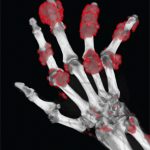A recent analysis compared the care of patients with RA with that received by patients with gout, finding that hospitalization and costs for patients with gout have increased, but both are decreasing for patients with RA. Unlike RA, significant advances in treatment have not been made for gout, despite its increasing prevalence, and patients may land in the hospital unnecessarily…





